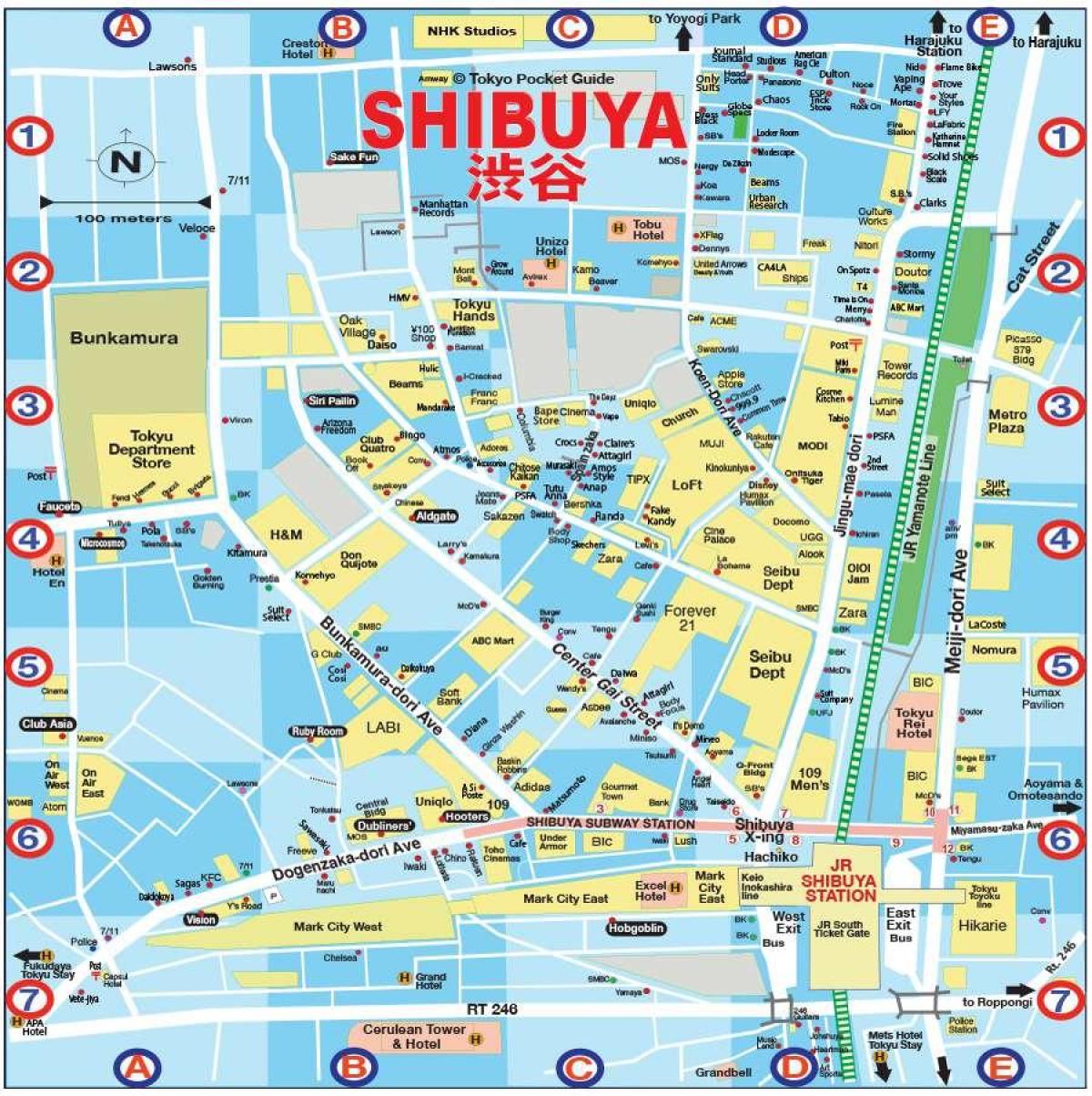search
Shibuya map
Map of Shibuya Tokyo. Shibuya map (Kantō - Japan) to print. Shibuya map (Kantō - Japan) to download. Shibuya (渋谷区 Shibuya-ku?) is one of the 23 special wards of Tokyo, Japan. As of 2008, Shibuya has an estimated population of 208,371 and a population density of 13,540 persons per km² as its shown in Shibuya map. The total area is 15.11 km². The name "Shibuya" is also used to refer to the shopping district which surrounds Shibuya Station, one of Tokyo busiest railway stations. This area is known as one of the fashion centers of Japan, particularly for young people, and as a major nightlife area. Shibuya is famous for its scramble crossing. Shibuya is located in front of the Shibuya Station Hachikō exit and stops vehicles in all directions to allow pedestrians to inundate the entire intersection. The statue of Hachikō, a dog, between the station and the intersection, is a common meeting place and almost always crowded.
Following the opening of the Yamanote Line in 1885, Shibuya began to emerge as a railway terminal for southwestern Tokyo and eventually as a major commercial and entertainment center as its mentioned in Shibuya map. Shibuya was incorporated as a village in Minami-Toshima County (Toyotama County from 1896) in 1889, as a town in 1909, as a ward of Tokyo City in 1932, and as a ward of Tokyo Metropolis in 1943. The present-day special ward was established on March 15, 1947.
Shibuya includes many well-known commercial and residential districts such as Daikanyama, Ebisu, Harajuku, Hiroo, Higashi, Omotesandō, Sendagaya, and Yoyogi as you can see in Shibuya map. Shibuya is run by a city assembly of 34 elected members. The current mayor is Toshitake Kuwahara, an independent backed by the Liberal Democratic Party and Komeito.


